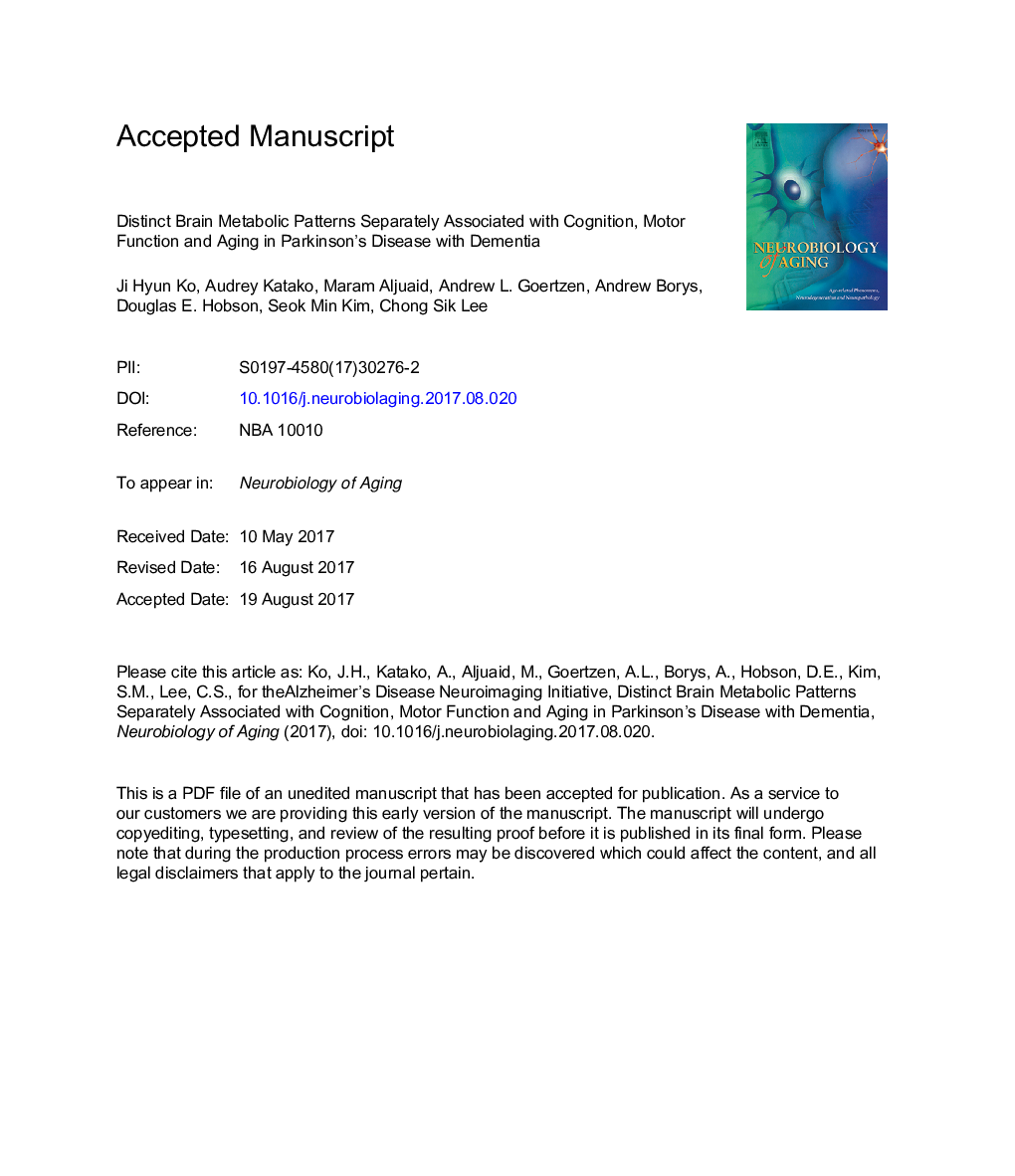| Article ID | Journal | Published Year | Pages | File Type |
|---|---|---|---|---|
| 4932529 | Neurobiology of Aging | 2017 | 40 Pages |
Abstract
We explored whether patients with Parkinson's disease dementia (PDD) show a distinct spatial metabolic pattern that characterizes cognitive deficits in addition to motor dysfunction. Eighteen patients with PDD underwent 3 separate positron emission tomography sessions with [18F]fluorodeoxyglucose (for glucose metabolism), fluorinated N-3-fluoropropyl-2-beta-carboxymethoxy-3-beta-(4-iodophenyl) nortropane (for dopamine transporter density) and Pittsburgh compound-B (for beta-amyloid load). We confirmed in PDD versus normal controls, overall hypometabolism in the posterior and prefrontal brain regions accompanied with hypermetabolism in subcortical structures and the cerebellar vermis. A multivariate network analysis then revealed 3 metabolic patterns that are separately associated with cognitive performance (p = 0.042), age (p = 0.042), and motor symptom severity (p = 0.039). The age-related pattern's association with aging was replicated in healthy controls (p = 0.047) and patients with Alzheimer's disease (p = 0.002). The cognition-related pattern's association with cognitive performance was observed, with a trend-level of correlation, in patients with dementia with Lewy bodies (p = 0.084) but not in patients with Alzheimer's disease (p = 0.974). We found no association with fluorinated N-3-fluoropropyl-2-beta-carboxymethoxy-3-beta-(4-iodophenyl) nortropane and Pittsburgh compound-B positron emission tomography with patients' cognitive performance.
Keywords
Related Topics
Life Sciences
Biochemistry, Genetics and Molecular Biology
Ageing
Authors
Ji Hyun Ko, Audrey Katako, Maram Aljuaid, Andrew L. Goertzen, Andrew Borys, Douglas E. Hobson, Seok Min Kim, Chong Sik Lee, Alzheimer's Disease Neuroimaging Initiative Alzheimer's Disease Neuroimaging Initiative,
